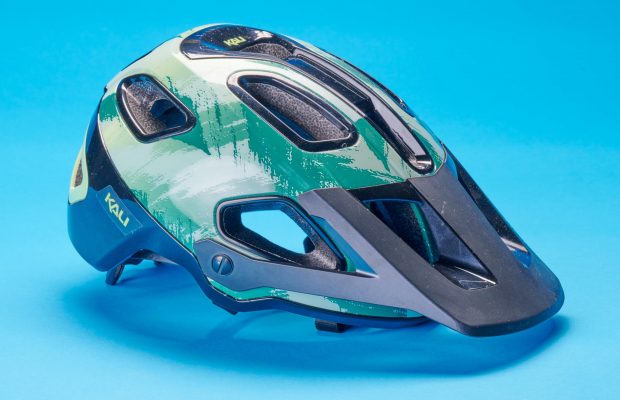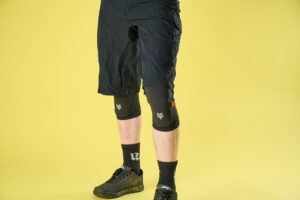The Kali Cascade boasts great recycled content, and is packed with safety tech too
The Kali Protectives Cascade helmet is a smart eco-choice, and it doesn’t scrimp on protection either
Kali has traditionally focused on the safety side of mountain bike helmet design but it claims the new Cascade also features a ton of recycled content, so it will protect your head and the environment too. That’s the claim but how does it all work in practice, and how does the Cascade stack up against the best mountain bike helmets in the business?
Design and construction
At the heart of the helmet is Kali’s patented Conehead technology. This is a secondary layer that sits underneath a recycled EPS (expanded polystyrene) section, but the difference is it has multiple small cones that help dissipate forces away from your skull under impact. The Conehead doesn’t add weight or create any sizing issues and just offers that security if and when you need it.

Peer between the padding layers on Kali’s Cascade helmet and you’ll see little blue pores that work a bit like Mips to lessen the forces from a crash
Attached to this is a low-density Rheon layer, which is the blue open pore structure you can see poking out between the pads. Rheon is an energy-absorbing super polymer and essentially works in pretty much the same way as a MIPs liner. It helps mitigate the low-G linear and rotational forces by rotating slightly on your head during an impact event. The open cells allow air to circulate freely and are surprisingly comfortable against your head, although we can’t vouch for bare skin.
Like most mountain bike helmets, the Cascade has a full complement of sweat pads including a broad one across the front. There’s a height-adjustable Frequency Fit System with a dial for tweaking the fit. Externally there is a large adjustable visor made from Oceanworks recycled plastic. It’s only up or down, and it doesn’t coordinate with the rest of the helmet, but it feels solid and offers good coverage.
Kali uses recycled PET (the plastic used for packing and water bottles) for the straps and they come with adjustable triangular-shaped sliders. There’s also a magnetic FidLock buckle and rubber tag to keep the excess strip at bay. Like all Kali helmets, the Cascade is covered by a lifetime crash replacement warranty.

There’s a long peak on the Cascade helmet, and while it’s not colour matched to the rest it is rock solid
Performance
The first thing we did was cut down the chin strap because it was way too long. You have to burn the ends of the Nylon to stop it from fraying but it’s easy to do and keeps everything tidy. The sliders don’t move when riding but are still easy to adjust allowing you to get the strap flat against the jawline. I’m a big fan of the FidLock buckle because it doesn’t nip your chin (it’s great for kids), but I know it does add significant cost over a standard D buckle.
While the Cascade has 13 vents, including some big intakes at the front, I’d only rate the cooling as average. With a lot of helmets, you can see right through the channels to the other side, but not this one.
The Cascade only comes in two sizes – the small/medium tested is intended for heads between 55cm and 61cm, which is quite a broad spectrum and actually overlaps three helmet sizes offered by Bell. The in-house fit system does accommodate that range but because of that the dial has to wind in a lot of cable, so there’s not a lot of fine-tuning. The retention device also doesn’t fully wrap around your head so as you tension it the helmet can lift slightly and feel a little bit perched.
To add some durability the shell is bottom-wrapped, and it also extends down at the rear and at the temples. There’s an open area on the top for a camera mount and a channel at the rear for a goggle strap, although I’d like to see some silicone grip to hold it more securely. The two-position visor flips up just enough so you can park your goggles underneath.
Verdict
Enduro-specific helmets are ten-a-penny, but you still pay a premium for the race tag. In terms of cost, the Cascade splits enduro stalwarts the Bell Sixer and Troy Lee Designs A3, and has similar functionality to both, although Kali gets there by a different route. It’s well-proportioned, fits a good range of head shapes with no hot spots or hard edges, and the bamboo padding offers a plush fit. I don’t think the Cascade has the race lines or graphics of the two aforementioned helmets, but its appeal is its recycled content. You may not care about it, but it doesn’t impair the performance, so you can at least be doing something for the environment while you’re riding in it.
















